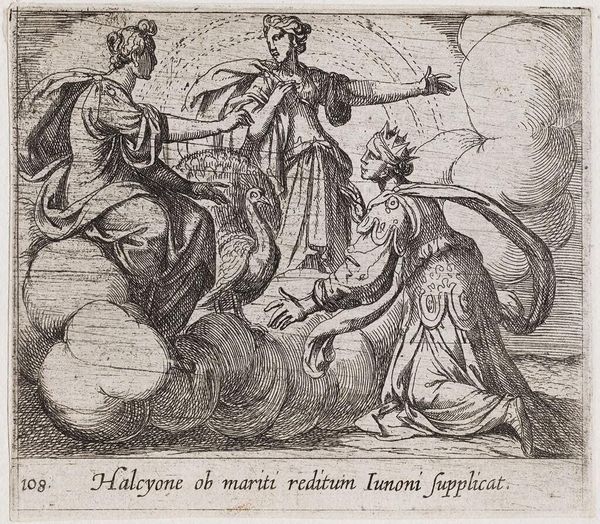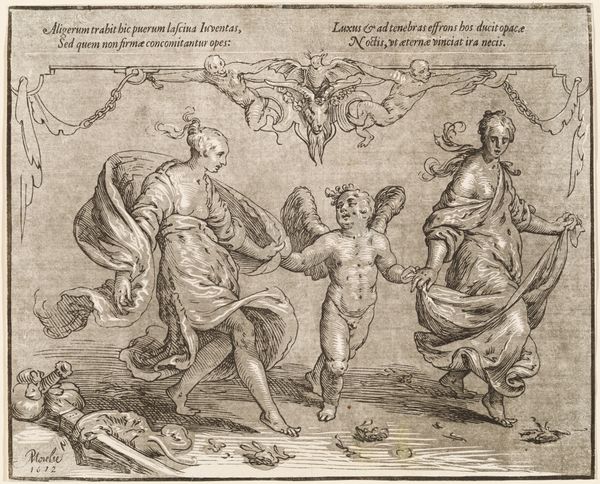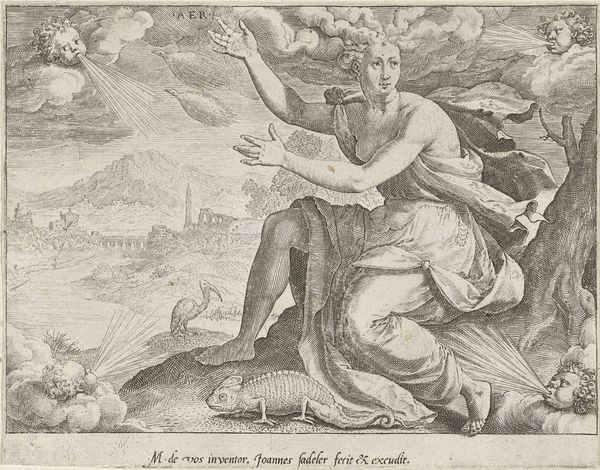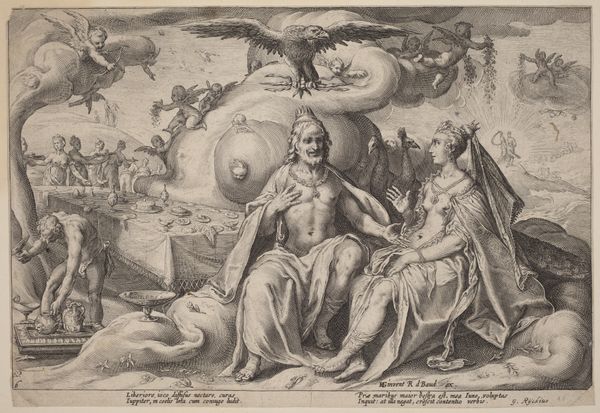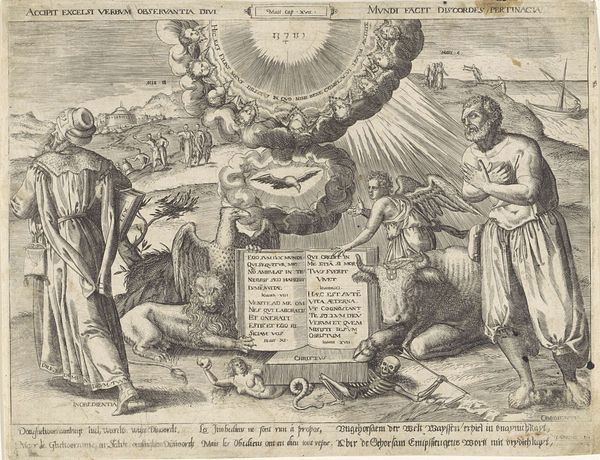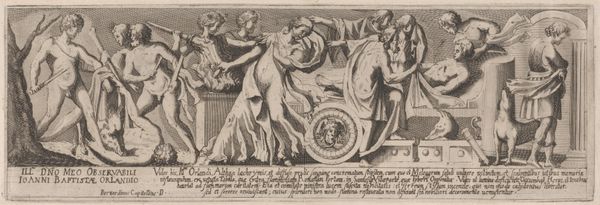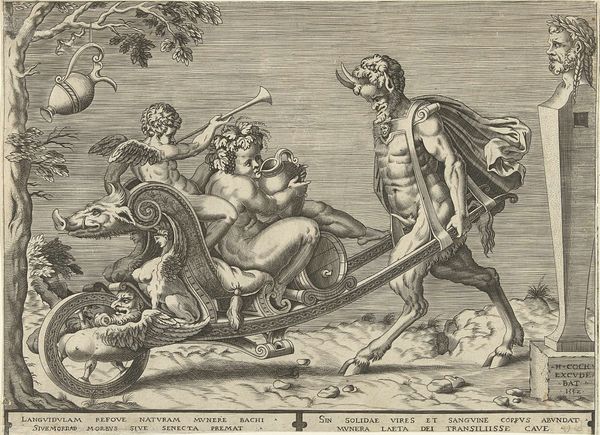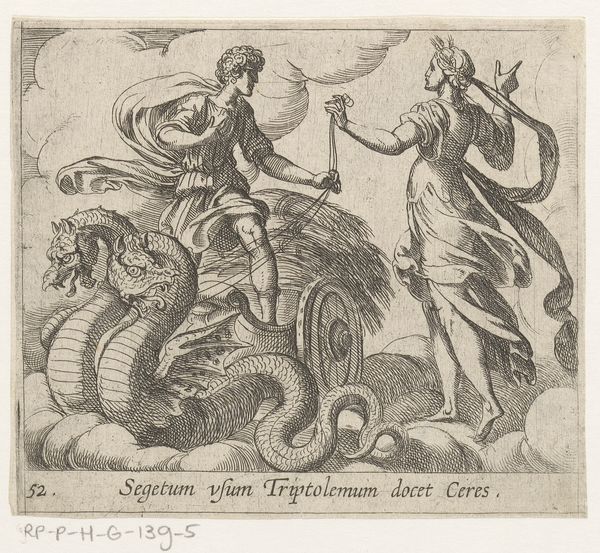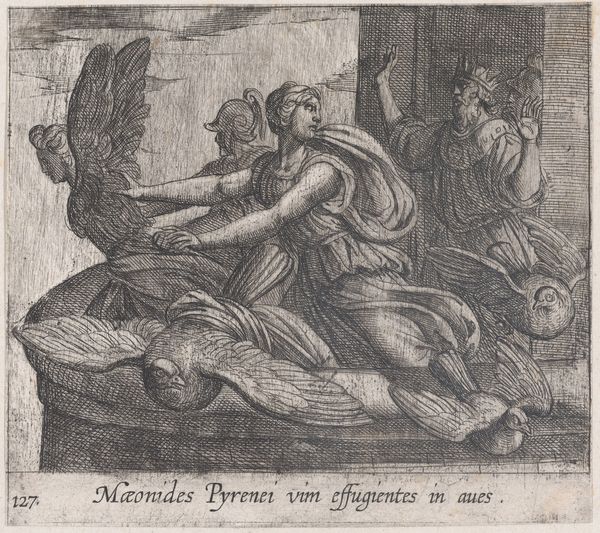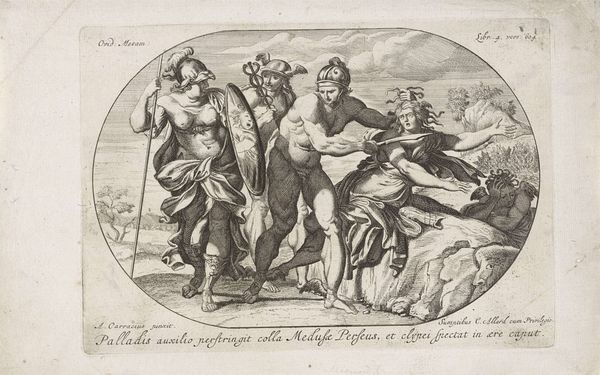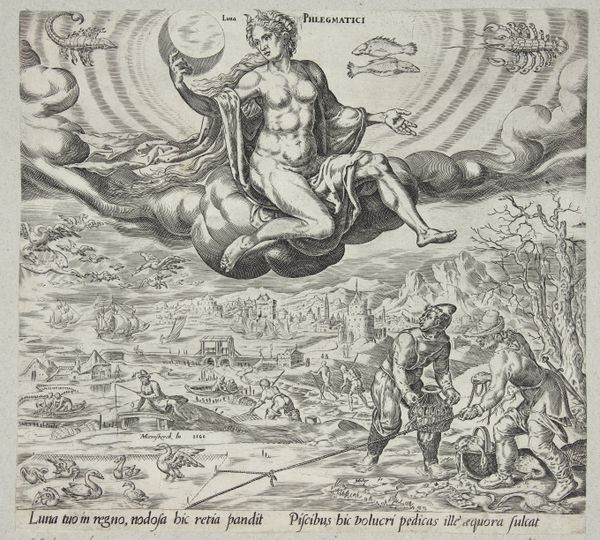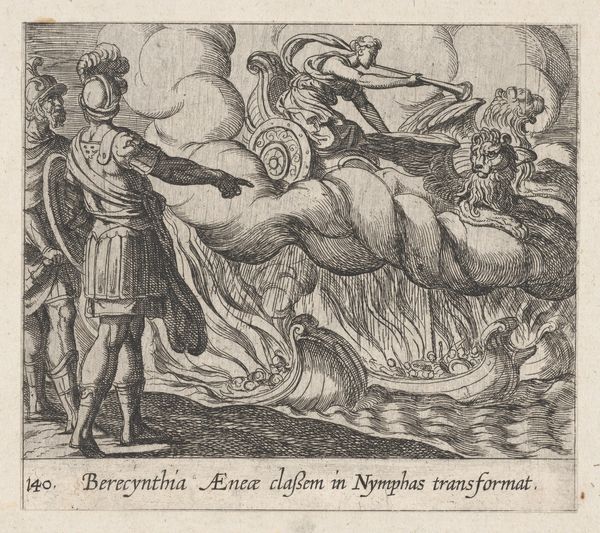
Plate 108: Alcyone Offering Prayers to Juno (Halcyone ob mariti reditum Iunoni supplicat), from Ovid's 'Metamorphoses' 1606
0:00
0:00
drawing, print, etching
#
drawing
#
allegory
#
narrative-art
#
baroque
# print
#
etching
#
figuration
#
history-painting
Dimensions: Sheet: 3 15/16 × 4 9/16 in. (10 × 11.6 cm)
Copyright: Public Domain
Editor: Here we have Antonio Tempesta's etching from 1606, "Alcyone Offering Prayers to Juno from Ovid's Metamorphoses". It depicts three figures amidst clouds – one kneeling, one standing, and one seated, with what appears to be a peacock nearby. I’m immediately struck by the theatricality of the scene, almost like a stage play frozen in time. How do you interpret the cultural significance of Tempesta choosing this particular scene from Ovid? Curator: It's crucial to recognize that Tempesta wasn't merely illustrating a mythological story. The early 17th century saw a resurgence of interest in classical literature, and prints like these weren't just decorative; they were vehicles for disseminating knowledge and reinforcing social hierarchies. Consider that this print, part of a series, was likely acquired by educated elites, reinforcing their understanding of classical texts and their own social standing through cultural capital. Who do you think had access to such knowledge, and how might that impact reception? Editor: That's fascinating. It paints a picture of how art consumption was really tied to social class and education. It also highlights how museums now play such an important role in opening access to these resources to the general public. What do you think this piece would represent for today's museum audience? Curator: Today, it provides a valuable window into the past. Beyond the story itself, we see the visual language of the Baroque period – the dynamic composition, the dramatic gestures. It can also spark discussions about the role of mythology in shaping cultural values and the continuing relevance of classical literature in contemporary society, something easily lost without institutions there to safeguard these cultural representations. How could museums present these stories to attract a new generation? Editor: I think that makes it even more significant, to see how these past power structures were at play even within the arts and knowledge production itself. Thanks for providing a wider context about this artwork.
Comments
No comments
Be the first to comment and join the conversation on the ultimate creative platform.
